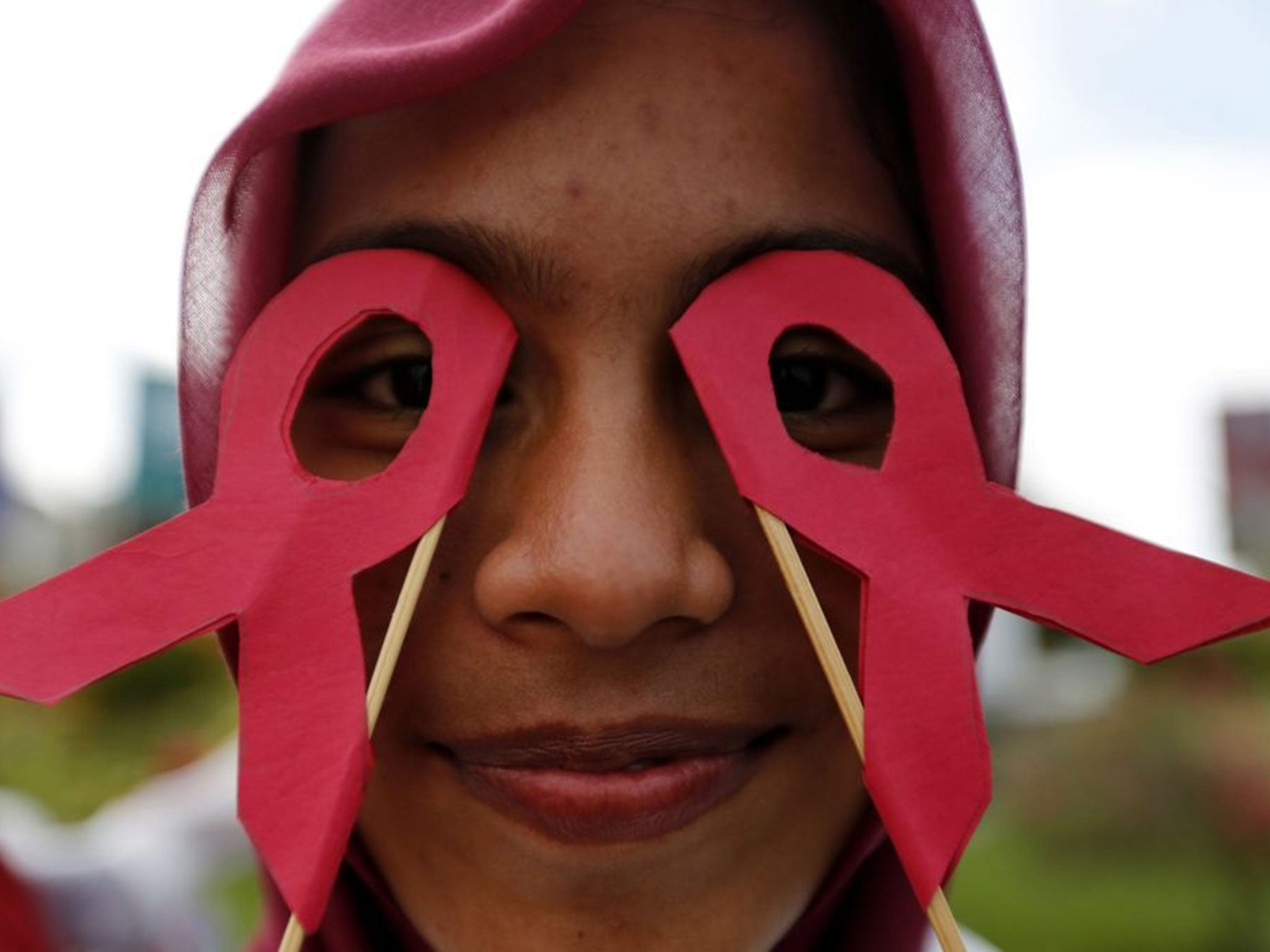World Aids Day: 10 facts about the condition
Including that two million people were infected last year...

Your support helps us to tell the story
From reproductive rights to climate change to Big Tech, The Independent is on the ground when the story is developing. Whether it's investigating the financials of Elon Musk's pro-Trump PAC or producing our latest documentary, 'The A Word', which shines a light on the American women fighting for reproductive rights, we know how important it is to parse out the facts from the messaging.
At such a critical moment in US history, we need reporters on the ground. Your donation allows us to keep sending journalists to speak to both sides of the story.
The Independent is trusted by Americans across the entire political spectrum. And unlike many other quality news outlets, we choose not to lock Americans out of our reporting and analysis with paywalls. We believe quality journalism should be available to everyone, paid for by those who can afford it.
Your support makes all the difference.Despite major advances, HIV/AIDS remains one of the world's most significant public health challenges, particularly in low and middle income countries, with new diagnoses every year and young women in sub-Saharan Africa seen as being particularly at risk.
World AIDS Day on 1 December is used to unite people in the fight against HIV, the human immunodeficiency virus first identified in 1984, to show their support for people living with HIV and commemorate those who have died.
The member countries of the United Nations agreed in September in a new set of global goals to end the AIDS epidemic by 2030.
Here are some facts about AIDS in 2015 with data from the World Health Organisation, the United Nations children's agency UNICEF, and UNAIDS:
1. Globally about 36.9 million people are living with HIV including 2.6 million children
2. An estimated 2 million were infected in 2014
3. An estimated 34 million people have died from HIV or AIDS, including 1.2 million in 2014
4. The number of adolescent deaths from AIDS has tripled over the last 15 years
5. AIDS is the number one cause of death among adolescents in Africa and the second among adolescents globally
6. In sub-Saharan Africa, the region with the highest prevalence, girls account for 7 in 10 new infections among those aged 15-19
7. At start of 2015, 15 million people were receiving antiretroviral therapy compared to 1 million in 2001
8. Despite widespread availability of HIV testing, only an estimated 51 percent of people with HIV know their status
9. The global response to HIV has averted 30 million new HIV infections and nearly 8 million deaths since 2000
10. In 2015, Cuba was the first country declared to have eliminated mother-to-child transmission of HIV
Thomson Reuters Foundation
Join our commenting forum
Join thought-provoking conversations, follow other Independent readers and see their replies
Comments